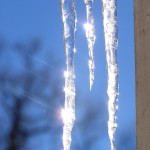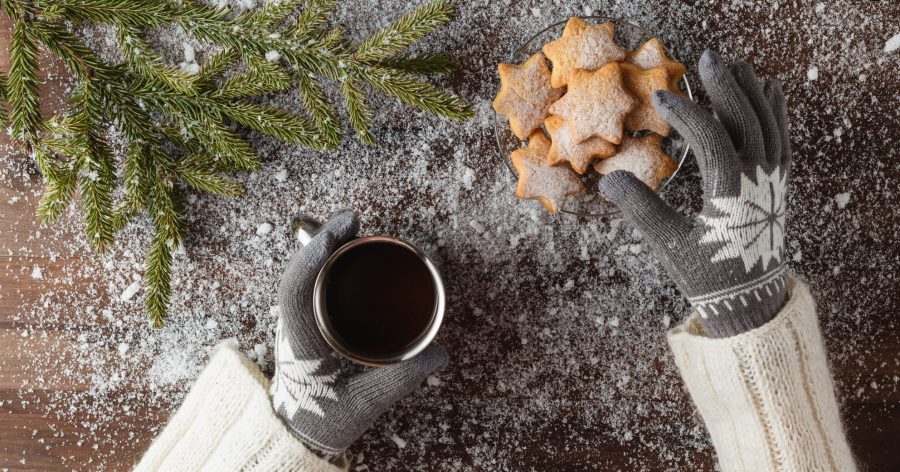As you may have noticed… it is cold out! Extremely cold temperatures make staying warm and safe a challenge. Exposure to cold temperatures, whether indoors or outside, can cause other serious or life-threatening health problems. Anyone can be affected, however infants and the elderly are particularly at risk. Here is some information to help you stay healthy and safe during this extreme cold.
- The World Health Organization suggests keeping indoor temperatures between 64 and 75 degrees Fahrenheit for healthy people. Ideally the temperature should be kept above 68 degrees Fahrenheit to protect the very young, the elderly, or people with health problems.
- Watch for signs of hypothermia – shivering, confusion, memory loss, drowsiness, exhaustion and slurred speech. Infants who are suffering from hypothermia may appear to have very low energy and bright red, cold skin. Frostbite symptoms include numbness, flushed gray, white, blue or yellow skin discoloration, numbness, or waxy feeling skin. Call 911 immediately if you suspect you or someone you know is suffering from either condition.
- When outside, especially in high wind conditions, take extra precautions to reduce the risk of hypothermia and frostbite. Be sure your outer layer of clothing is tightly woven to reduce body-heat loss caused by wind, and cover exposed skin.
- Listen to your body! Do not ignore shivering – it is an important sign that your body is losing heat and a signal to quickly return indoors.
- Cold weather puts an extra burden on the heart. If you have cardiac problems or high blood pressure, follow your doctor’s orders about shoveling or performing any strenuous exercise outside.
- Healthy adults should remember that their bodies already are working overtime just to stay warm. Dress appropriately and work slowly when doing heavy outdoor chores.
- Bring your pets indoors. Yes, they have fur but extreme temperatures effect them too. Also, salt from roads and walkways can damage their paws and may lead to inadvertent toxic ingestion.

- If you are having trouble paying your bills this winter, you can call or visit the NYS Home Energy Assistance Program (HEAP) website or Hotline at 1-800-342-3009.
- Be a good neighbor – check on your neighbors, especially if they are elderly.
- Do your best to clear walkways of snow and ice to avoid injury from falls. Use extreme caution in clearing your roof; consider using a specialist who has the right tools. Falling icicles and heavy snow can cause life threatening injuries.
If you need to use extra sources of heat to stay warm…
- Take precautions to avoid exposure to dangerous levels of carbon monoxide.
- Carbon monoxide (CO) is a potentially deadly gas. It is colorless, odorless, tasteless and non-irritating. It is produced by burning fuels such as wood, oil, natural gas, kerosene, coal and gasoline.
- Symptoms of carbon monoxide poisoning are similar to the flu but do not include a fever. At lower levels of exposure, a person may
 experience a headache, fatigue, nausea, vomiting, dizziness, and shortness of breath. Exposure to very high levels of carbon monoxide can result in loss of consciousness and even death.
experience a headache, fatigue, nausea, vomiting, dizziness, and shortness of breath. Exposure to very high levels of carbon monoxide can result in loss of consciousness and even death.
- Make sure you have smoke and CO alarms in your home. Test them once a month and replace the batteries twice a year. Wood stoves, space heaters, electric heaters, kerosene heaters and pellet stoves can be dangerous unless proper safety precautions are followed. DO NOT start your car to warm up in a garage.
- Try to avoid using extension cords to plug in space heaters. If you have to, make sure they do not become a trip and fall hazard and do not run extension cords under rugs. Make sure supplemental heaters are in a safe place to avoid being knocked over unintentionally.
- To avoid frozen pipes, keep the heat on and set no lower than 55 degrees. You can also let faucets drip a little to avoid freezing, open cabinet doors to allow more heat to get to non-insulated pipes under a sink or appliance near an outer wall.
In order to prepare for extreme cold temperatures…
- In your home, keep several days’ supply of food that needs no cooking or refrigeration (remember baby food and formula if you have young children), water stored in clean containers (5 gallons per person), and medicines that any family member may need.
- In your car, keep the gas tank near full to help avoid ice in the tank and fuel lines. Make sure your vehicle is up to date on maintenance and serviced including the radiator system serviced, replace windshield-wiper fluid with a wintertime mixture, replace any worn tires, and check the air pressure in the tires.
For more info on how to prepare for extreme cold conditions, please check the CDC guide here.


